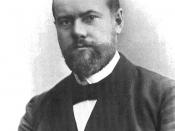A definition of an organisation is firstly required so that the term "ÃÂOrganisational Behaviour' can be fully appreciated.
"Organisations are social arrangements for achieving controlled performance in pursuit of collective goals"� (Buchanan and Huszynski, 1997).
With a definition of an organisation as a base "ÃÂOrganisational Behaviour' can begin to explained and understood.
Organisational Behaviour is about the effect that people within an organisation have on the organisation's performance and it's objectives.
"Organisational Behaviour is a field of study that investigates the impact that individuals, groups and structure have on behaviour within organisations for the purpose of applying such knowledge toward improving an organisations effectiveness"� (Robbins, 1998).
There are a number of reasons why Organisational Behaviour is studied and why it is becoming one the most important areas of modern business thinking.
Firstly people are, in many cases, the most important part of an organisation. People are seen as a serious competitive advantage in many businesses and therefore the understanding of, and prediction of, how they think and behave is of up most concern in almost all organisations.
"It is becoming clear that the only true, lasting competitive advantage comes through human resources and how they are managed"� (Luthans, 1995).
There are a number of approaches to the study of Organisational Behaviour and these help to understand the developments that have occurred in the field over the last 100 years.
Firstly there is the "ÃÂClassical Approach' with two main areas. These are Scientific Management and the Bureaucratic Structure.
Many classical writers pursued the scientific approach with Fredrick Taylor (1856-1917) being the major contributor. The main concern for management at this time was to try and increase the productivity of the individual workers. This was done by the re-structuring of the work that had to be carried...


